A very rare bronze ritual rectangular wine vessel and cover, fangyi, late Shang dynasty, 13th-11th century
Lot 1106. A very rare bronze ritual rectangular wine vessel and cover, fangyi, late Shang dynasty, 13th-11th century; 9 ½ in. (24 cm.) high. Estimate USD 800,000 - USD 1,200,000. Price realised USD 972,500. © Christie's Images Ltd 2018
The vessel of tapering rectangular shape is finely flat-cast on each side with a largetaotie mask between a pair of birds confronted on a 'forehead shield' taotie above and a pair of addorsed dragons below, all reserved on a leiwen ground. The cover is decorated with an inverted taotie mask on each side below the faceted finial. Both the interior of the vessel and the cover are cast with a single clan sign, reading ding. There are traces of black inlay in the recesses that contrasts with the mottled milky-green and grey patina.
inscriptions inside the vessel.
Provenance: Offered at Sotheby's London, 12 June 1990, lot 7.
Michael Goedhuis Ltd., New York, 1998.
Literature: Liu Yu and Lu Yan, Jinchu yinzhou jinwen jilu (Compilation of Recently Discovered Shang and Zhou Bronze Inscriptions), Beijing, 2002, no. 988.
Wang Tao and Liu Yu, A Selection of Early Chinese Bronzes with Inscriptions from Sotheby's and Christie's, Shanghai, 2007, no. 320.
Wu Zhenfeng, Shangzhou qingtongqi mingwen ji tuxiang jicheng(Compendium of Inscriptions and Images of Bronzes from the Shang and Zhou Dynasties), Shanghai, 2012, vol. 24, p. 337, no. 13459.
Note: The clan signs cast inside the vessel and cover, each depicting a dingvessel with two prominent square handles and three legs, represent an important clan of the late Shang and early Western Zhou dynasties. The same clan sign can be found on a few other bronzes including a zun vessel and two you vessels in the famous Duan Fang altar set now in The Metropolitan Museum of Art, New York, published by Chen Zhaorong ed., Baoji daijiawan yu shigushan chutu shangzhou qingtongqi (Bronzes Unearthed from the Daijiawan and Shigushan in Baoji City), Taipei, 2015, pp. 94-95, no. 4, pp. 122-129, nos. 15 and 16, respectively. (Figs. 1-3) Discovered in 1901 in Baoji city, Shaanxi province, the Duan Fang altar set comprises a bronze ritual altar table, jin and twelve bronze ritual wine vessels. According to scholars, ibid, p. 95, “eleven bronzes (from the Duan Fang altar set) are inscribed with six different clan signs and six different ancestor names to whom sacrifices were offered. The only grouping which shares identical inscriptions are the zun vessel and two you vessels, which were originally displayed on the altar.” Therefore, a member of the Ding clan was most likely to own the Duan Fang altar set, and the Ding clan was possibly native to the Zhou land of modern day Baoji city, Shaanxi province.
Fig. 1 Bronze ritual wine vessel, you, early Western Zhou dynasty, late 11th century B.C.. Munsey Fund, 1931, (24.72.3a, b). The inscription of the vessel appears below. © 2000–2018 The Metropolitan Museum of Art.
Fig. 2 Bronze ritual wine vessel, you, with fitted pedestal, early Western Zhou dynasty, late 11th century B.C., Munsey Fund, 1931, (24.72.2a–c). The inscription on the vessel appears below. © 2000–2018 The Metropolitan Museum of Art.
Fig. 3 Bronze ritual wine vessel, zun, early Western Zhou dynasty, late 11th century B.C., Munsey Fund, 1931, (24.72.4). © 2000–2018 The Metropolitan Museum of Art.
Fangyi appear to have been one of the most prized of ritual vessels, as they have been found in fewer and more sumptuous tombs than more common shapes such as gu, jue, and ding. In Ancient Chinese and Ordos Bronzes, p. 92, J. Rawson and E. Bunker, in their discussion of the fangyi, note that during the Shang dynasty rare vessels of this type were used in pairs, as seen in the tomb of Fu Hao, illustrated in Tomb of Lady Hao at Yinxu in Anyang, Beijing, 1980, pls. XVIII (2) and XIX (1 and 2.) They are thought to have been used to store wine, and the heavy malachite encrustation in the base of the interior of the Sze Yuan Tang fangyi, sold at Christie’s New York, 16 September 2010, lot 822, is most likely the remains of some kind of wine made from grain.
Fangyi appear to have been one of the most prized of ritual vessels, as they have been found in fewer and more sumptuous tombs than more common shapes such as gu, jue, and ding. In Ancient Chinese and Ordos Bronzes, p. 92, J. Rawson and E. Bunker, in their discussion of the fangyi, note that during the Shang dynasty rare vessels of this type were used in pairs, as seen in the tomb of Fu Hao, illustrated in Tomb of Lady Hao at Yinxu in Anyang, Beijing, 1980, pls. XVIII (2) and XIX (1 and 2.) They are thought to have been used to store wine, and the heavy malachite encrustation in the base of the interior of the Sze Yuan Tang fangyi, sold at Christie’s New York, 16 September 2010, lot 822, is most likely the remains of some kind of wine made from grain.
Formely in the Burchard Collection, London & the Ernst Gross-Spühler Collection. An important and rare bronze wine vessel and cover, Fangyi, late Shang dynasty, Anyang, 12th-11th century BC; 11¼ in. (28.5 cm.) high. Sold for 3,330,500 USD at Christie’s New York, 16 September 2010, lot 822. © Christie's Images Ltd 20180
R. Bagley discusses the evolution of the fangyi form in Shang Ritual Bronzes in the Arthur M. Sackler Collections, The Arthur M. Sackler Foundation, 1987, pp. 428-44. The earliest fangyi, as represented by those in figs. 77.7-77.9, p. 433, have a distinctly defined foot with larger arched openings, the body does not have flanged corners, and the covers, seen in figs. 77.7 and 77.9, have a straight cant. What may be considered a slightly later group is represented by no. 77, pp. 428-435, which does not have a distinct demarcation between the foot and the body, but instead a straight tapering profile, and the covers have a slightly convex profile. The last group, represented by no. 79, pp. 440-44, and the Sze Yuan Tang fangyi, have a more robust, more sharply tapering shape, and prominent flanges, but seem to have reverted to the more distinctly defined foot and the straight canted cover of the earliest type.
As with the Sackler fangyi no. 77, the present fangyi can be dated to the period of Fu Hao’s tomb thereafter, circa 13th century BC. Another fangyi of similar form and decoration is illustrated ibid, fig. 77.10. Compare, also, a fangyi of this type cast with high-relief decoration, illustrated ibid, fig. 77.11. According to R. W. Bagley, ibid, p. 432, “the nearest relatives of no. 77 are with few exceptions decorated in Style V. I know of only a single Style IV vessel resembling no. 77 (fig. 77.10) but six or seven fangyi that represent its design in a very subdued high relief.” The present fangyi therefore counts as the third known Style IV example resembling the Sackler fangyi no. 77. It is also interesting to note that the present fangyi is the only one of its type to eliminate completely any hint of flange. The other examples all have notched corners which allude to flanges.
Christie's. Fine Chinese Ceramics and Works of Art, New York, 13 - 14 September 2018

/https%3A%2F%2Fprofilepics.canalblog.com%2Fprofilepics%2F1%2F0%2F100183.jpg)
/https%3A%2F%2Fstorage.canalblog.com%2F03%2F02%2F119589%2F96711876_o.jpg)
/https%3A%2F%2Fstorage.canalblog.com%2F11%2F31%2F119589%2F94773502_o.jpg)
/https%3A%2F%2Fstorage.canalblog.com%2F20%2F83%2F119589%2F94772815_o.jpg)
/https%3A%2F%2Fstorage.canalblog.com%2F26%2F72%2F119589%2F75604929_o.jpg)
/https%3A%2F%2Fstorage.canalblog.com%2F59%2F60%2F119589%2F26458628_o.jpg)
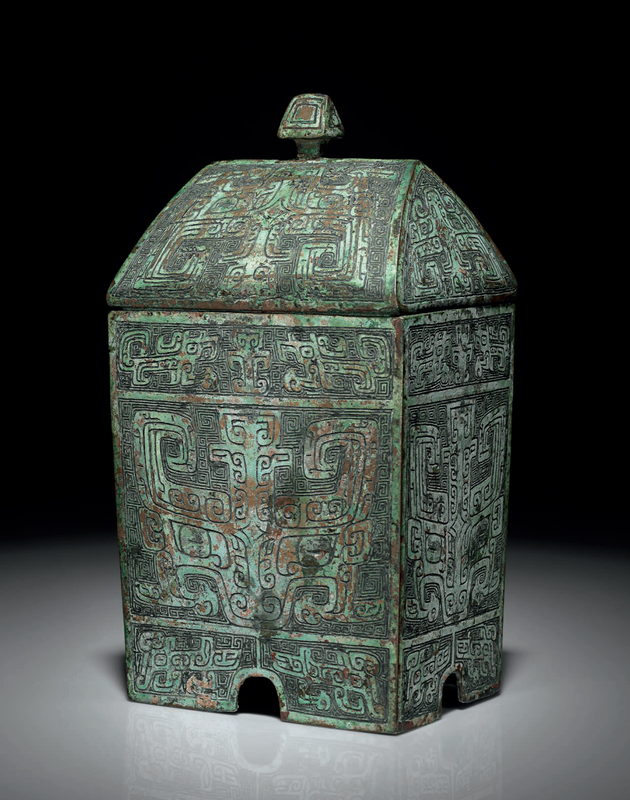



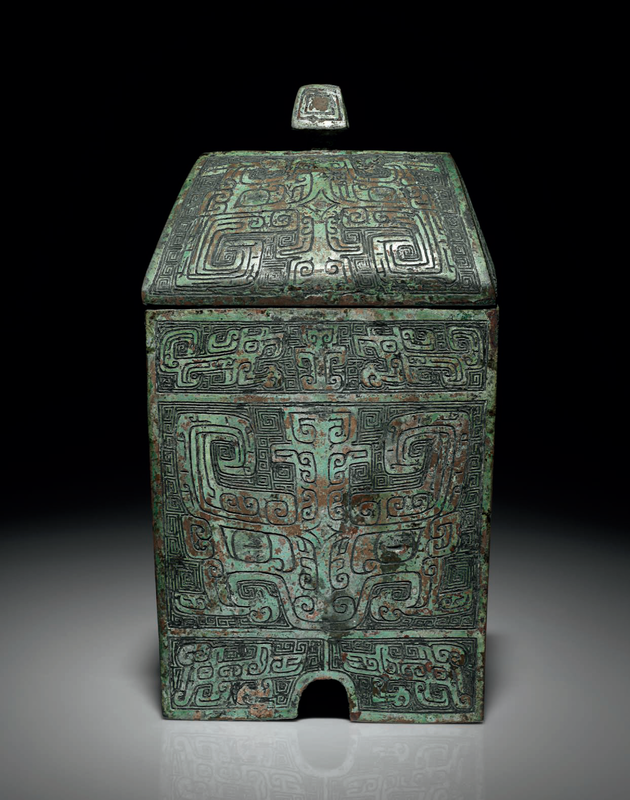
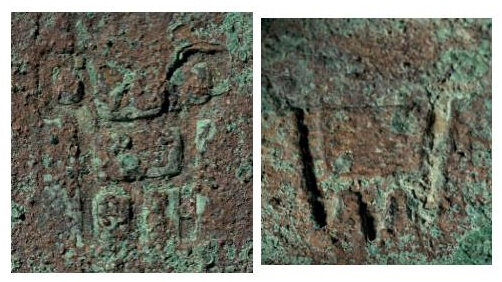

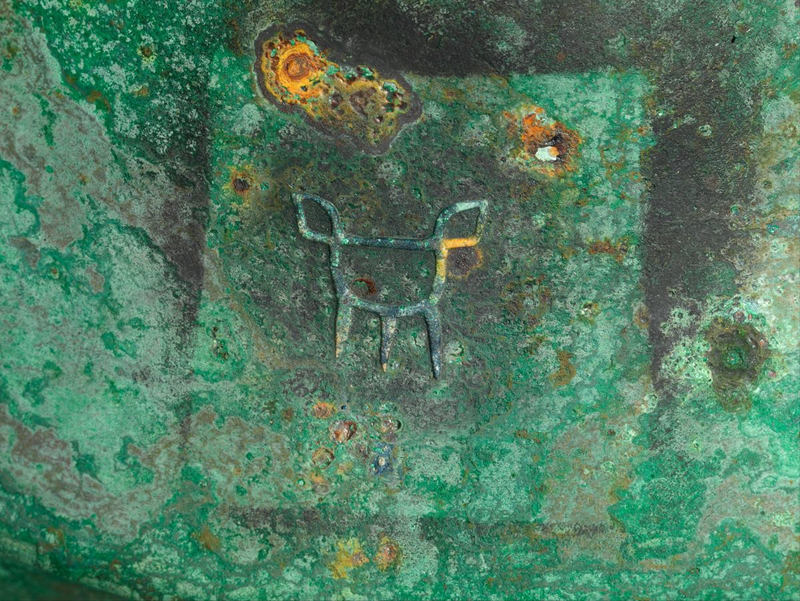
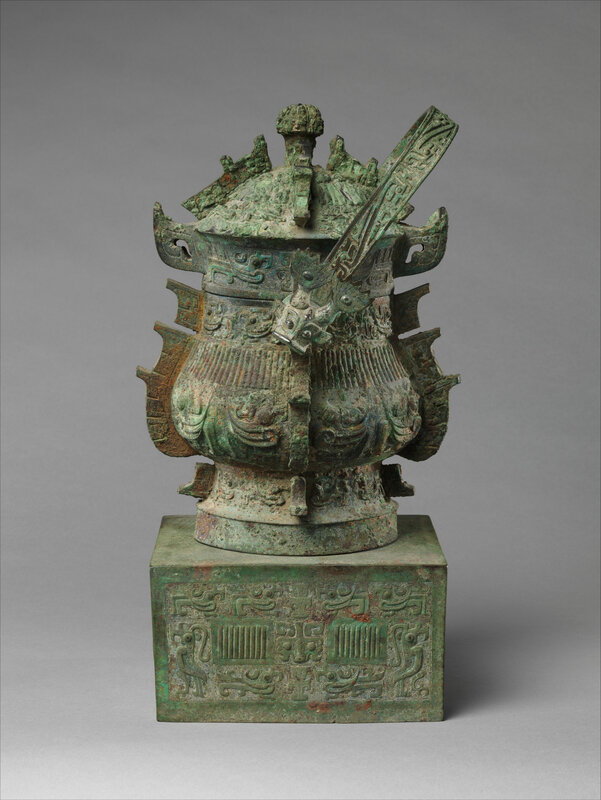
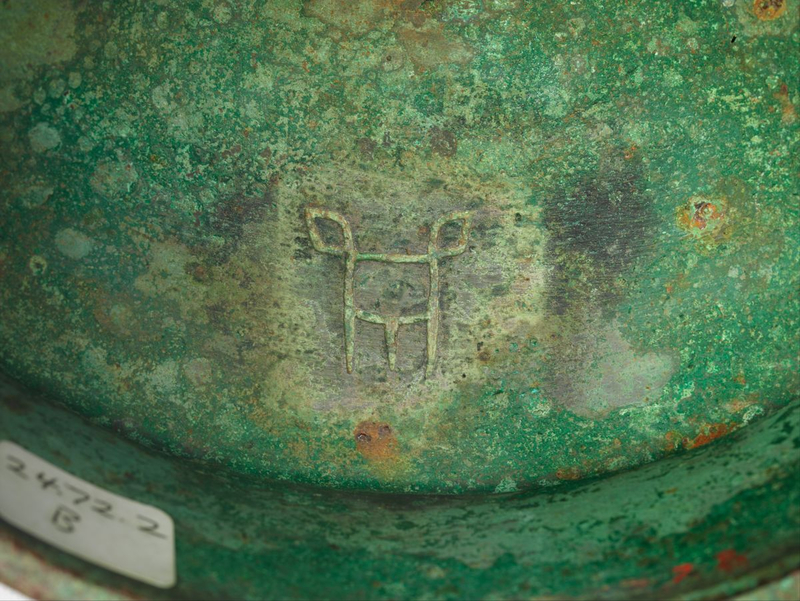

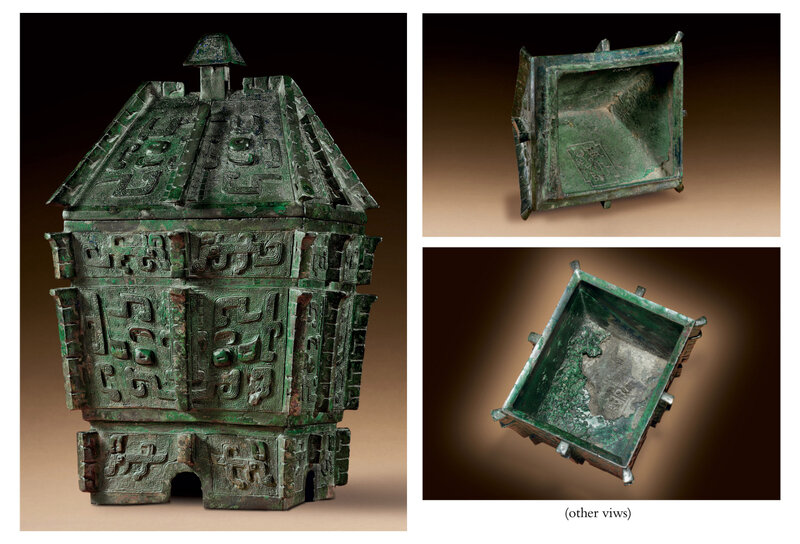


/image%2F1371349%2F20240406%2Fob_b23648_434058570-1644317966338216-88086167391.jpg)
/image%2F1371349%2F20240403%2Fob_6d5ae7_dp-28103-001.jpg)
/image%2F1371349%2F20240229%2Fob_8f31f9_431013694-1625286614908018-33034430839.jpg)
/http%3A%2F%2Fstorage.canalblog.com%2F79%2F20%2F119589%2F129837997_o.jpg)